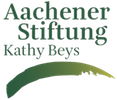Lettland
Nachhaltigkeit in der LandespolitikUmweltministerium mit
Sustainable Development of Latvia: "... the Council of Sustainable Development was formed in December 2001."
Environmental Impact Assesment
Industrial Pollution
Global Climate Change
ZIP
National Rio +10 (PDF)
UN-Regionalkommission für Europa (UNECE): Environmental performance review of Latvia. As discussed and approved by the five session of the Committee on Environment Policy October 1998
UN-Regionalkommission für Europa (UNECE): ERP of Latvia. Report on Follow-up.Genf, August 2000
Bericht des Regional Environmental Center for Central and Eastern Europe (REC)
im Auftrag der EU-Kommission: "Requirements and Framework for Environment and Transport Telematics. Country Report: LATVIA", November 1998 (WORD, 845 KB); Auszug: "Air, Water and Soil QualityThe air quality in Latvia is similar to that of Europe. Emissions of CO, SOx, and NOx per person in Latvia are lower compared with other European countries and can be accounted for by the comparably low economic activity, by the high share of renewable resources in use for primary energy supply (20 percent), and by the high percentage of natural gas used for primary energy supply (19 percent). Urban areas and industrial sites are among the sources most responsible for air pollution, while other significant sources include increasing road traffic (more than 75 percent), energy and industry sectors, and the transboundary air pollution. 85 percent of all surface waters have a moderate level of organic pollution and nutrients, quite high concentrations of oxygen, and rich flora and fauna. The major problem is the eutrophication of waters created by biogenous substances. The main polluting sources are untreated municipal wastewater and runoff from agricultural lands, transboundary pollution. Latvia has rich reserves of groundwater, which can be used for water supply at almost any location. Water quality problems arise only from naturally increased iron and reduced fluoride content, and often from excessive hardness. Around 1000 local contaminated sub-soil groundwater sites in Latvia have been detected. The coastal waters of the Latvian economic zone within the Baltic Sea are moderately polluted but some local regions are highly polluted. Zones at ecological risk are coastal regions within the vicinity of river estuaries, municipal and industrial wastewater discharge sites, mineral extraction and gravel disposal sites, as well as regions around ports. Latvian soils can be considered relatively clean and should therefore be considered part of the national wealth. Compaction, natural acidification and erosion (14.7 percent by wind and 24.3 percent by water) of arable land soils are the main problems faced in safeguarding soil quality in Latvia."
Lokale Agenda 21
- Union of Local and Regional Governments of Latvia
- Agenda 21 - Riga City Environment Center
- Coastal Network - Coastal Zone Agenda 21
Externe Links
Lettland beim Auswärtigen Amt (deutsch)
Homepage von Lettland
Lettland-Portal
Lettisches Parlament - Saeima of the Republic of Latvia
Staatspräsidentin von Lettland (deutsch)
UNDP in Lettland
Lettland-Seite des Europäischen Umweltinformations- und Umweltbeobachtungsnetzes (EIONET der EU
Lettland in der EU
Lettland im Profil
Baltic Marine Environment Protection Commission (Helsinki Commission) HELCOM, die Exekutive der "Helsinki-Konvention"
BALLERINA - Baltic Sea Region On-Line Environmental Information Resources for Internet Access
CCB, Coalition Clean Baltic: Netzwerk von Umwelt-NGOs von Ostsee-Anrainerstaaten (Dänemark, Estland, Finnland, Deutschland, Lettland, Litauen, Polen, Russland und Schweden).
